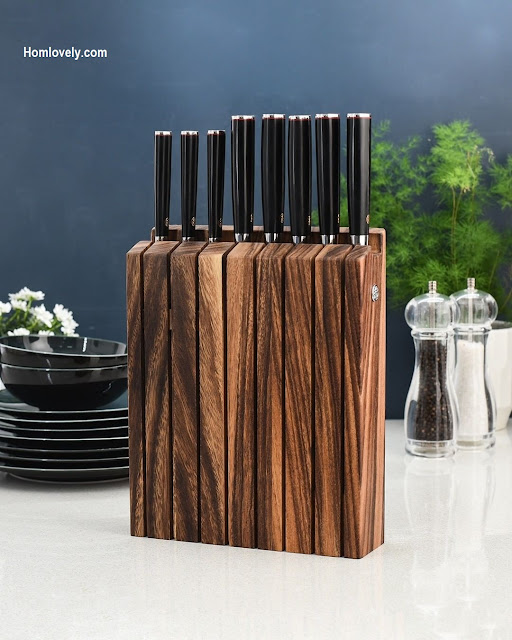Homlovely.com - Did you know what the dirtiest place in the house is? Some of you might think the toilet seat is, since there are thousands of germs living there. However, there are actually many dirty spots in the house that become a nest for germs. For instance, a dishwashing sponge in the kitchen contains millions of microbes and germs that come from the eating utensils. What are the other things that can be a nest of germs in the kitchen?
Bottles / Cans Opener
 |
| Instagram/boho_home_ |
Most people keep a can or bottle opener in the drawer after use. But did you realize that it is a wrong way? A can or bottle opener stored in a drawer will potentially bring in E.coli and salmonella bacteria. These bacteria are notoriously dangerous because they can lead to diseases such as diarrhea, abdominal cramps, fever, nausea and vomiting. In order to protect your family from these bacteria, immediately wash the opener with hot water and soap after use.
Rubber Cover on the Blender
 |
| Instagram/lestermart_ |
This rubber cover is used to prevent leaks in the blender during use. Blender is often used to blend the vegetables and fruit. Without you realizing it, the rubber on this blender also keeps the e-coli, salmonella and moss stay. Preferably, when washing the blender separate off all the parts so that everything can be washed properly. Use soap and warm water to make it clean.
Recycled Shopping Bag
 |
| Instagram/takekagoya |
Using recycled shopping bag is recommended to reduce plastic waste which is very difficult to recycle. However, do not ignore the cleanliness of your grocery bag. Inside the bag there are vegetables, meat, or spic spills that accumulate and cause bacteria to exist.
 |
| Instagram/agur.handmade |
Ideally, to prevent the bacteria from staying, wash the bag immediately after shopping using white vinegar or natural disinfectant. Brush the inside part of the bag until it is clean, and dry it. It should not be stored in a too humid place. In addition, when shopping for meat, it is better to use double plastic, so that water does not leak and flow to another foodstuff. And most importantly, do not use this bag for other functions in addition to shopping for food, such as storing sports and baby clothes.
Knife Storage
Knife storage container consists of small gaps. Most people often put the knife in the storage space directly after using it, without washing it first. As a result, the knife container often gets humid which finally becomes a nest for a lot of bacteria.
 |
| Instagram/procookuk |
To clean it, remove all the knives, then wipe the knife place. Wash it with white vinegar, and let it completely dry for at leas half an hour. Allow to dry completely, at least half an hour. After that, rearrange the knives in the storage container.
Dishwashing Area / Sink
 |
| Instagram/greenbank_interiors |
This area is indeed the biggest hotbed of germs in the kitchen. According to a study, more than 60 percent of mildew is found in the sink area. We recommend that you clean the area of your kitchen sink regularly. Use vinegar, brush and warm water to clean it.
Drawers in the Refrigerator
 |
| Instagram/thecontainerstore |
A refrigerator in which all kinds of foodstuffs are stored potentially brings germs. And do you know which part in the refrigerator which becomes the largest nest of bacteria? The answer is a storage area of meat or freezer. To clean it, wash with white vinegar regularly to inhibit the growth of these bacteria. In addition, by cleaning on a regular basis you will also reduce the risk of the emergence of pathogen bacteria.
Rubber Spatula
 |
| Instagram/rubyway.am |
Spatula is usually used to stir the cake batter or spices. But without you knowing it, this thing is one of the favorite places for bacteria to grow. Preferably, any prior use, clean the spatula with warm water and soap, especially in the rubber spatula.
Surfaces of Kitchen Cabinets
 |
| Instagram/renonation |
This section may often be overlooked because of its position. In fact, millions of bacteria and dust accumulate there to haunt your family’s health. Instead, clean the dust regularly using a towel and water or white vinegar. To make the dust do not easily stick, you should coat your upper kitchen cabinets using a paper.
The Buttons in the Kitchen
They are perhaps the most frequently contaminated part of the kitchen. How often do you clean them? A study found that they are the dirtiest part of the kitchen. Dirt, oil, until the seasoning that accumulate in this section keep pathogenic, e coli, up to staphylococcus bacteria that can cause infections to the skin.
 |
| Instagram/mymodern.interior |
To avoid the growth of these bacteria, routinely clean these parts, including the light switch, the stove, the cabinets handle, refrigerators, faucets or drawer using warm water.
Author : Yuniar
Editor : Munawaroh
Source : Various Source
Homlovely.com is a home decor inspiration resource showcasing architecture, landscaping, furniture design, interior styles, and DIY home improvement methods.
Visit Homlovely.com everyday... Browse 1 million interior design photos, garden, plant, house plan, home decor, decorating ideas.











